6 Tips to pronounce French Sentences

Oct 15, 2020
How to improve your French Pronunciation ?
French pronunciation presents several challenges and each student has their own difficulties. So, to give a useful answer, I’m going to break my answer down into different topics, from basic sounds to whole sentences to explain the different components of French pronunciation and how it works. This way, depending on your own situation, it will be easier for you to choose an improvement strategy.
If I could compare French pronunciation to music, I would say:
- Learning how to pronounce French sounds (Phonetics) is like learning Musical Notes (See : Tips Phonetics)
- Learning How to pronounce Sentences is like Playing Music : how you say it

About your accent, the important thing is to have a decent French accent that does not affect the quality of your message, that is to say, that people do not make an effort to understand you well. Plus, having a little accent can also be ‘chic’.
This page is about How to pronounce Sentences.
Read tips below to decide where to put your priorities and see that French accent is only part of the game.
The Pronunciation of Sentences has two main goals :
- To help your interlocutor to decode your message (= Kind of rules)
- To give the desired meaning to your message (Depends on the Speaker)

Find below 6 Tips on How to Pronounce French Sentences (With examples and Audio)
1/ Intonation and Tonic Stress

Goals of Intonation and Tonic Stress are :
![]() To help your interlocutor to decode
To help your interlocutor to decode
![]() To give the desired meaning to your message
To give the desired meaning to your message
This is typically to help your interlocutor to decode your message (Kind of rules)
Intonation :
- If going down at the end of the “sentence” => your interlocutor understand : End of “sentence”
- If going up at the end of the “sentence” => your interlocutor understand : Question
Tonic Stress :
- At the end of “sentence” => your interlocutor understand : End of “sentence”
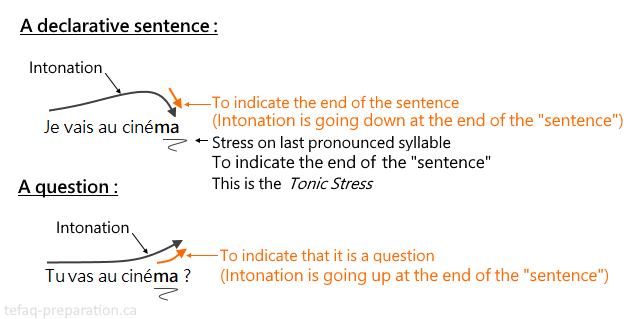
A quick test :
Are you able to put the right intonation to these sentences :
Declarative sentence : ” Tu vas manger à midi “
Question : ” Tu vas manger à midi ?”
In reality the word “Sentence” is not appropriated for these rules.
Correct expression is “Rhythmic Group” (or “Unit of Meaning”) called in French “Groupes rythmiques” (GR).
See next topic for more explanation.
2/ Rhythmic Groups as Units of Meaning

Goals of Rhythmic Groups as Units of Meaning are :
![]() To help your interlocutor to decode
To help your interlocutor to decode
![]() To give the desired meaning to your message
To give the desired meaning to your message
This is typically to help your interlocutor to decode your message (Kind of rules)
Because a sentence can have lot of information, to help interlocutor, Information is split in “Units of Meaning”.
(Note : “Unit of Meaning” = “Rhythmic Groups” = “Groupes Rythmiques” = GR )
The game is to help your interlocutor to catch them, and for that he must be able to :
- to identify beginning and end of “Unit of Meaning” (GR)
- to know if it is a question, a declarative information, …
- to identify end of sentence (End of last”Unit of Meaning”)
In previous topic Tonic Stress was in reality to indicate the end of the “Rhythmic Group”.
In examples below, look at Intonation, End of “Rhythmic Groups” and End of sentences.
(For simplification, these examples have no questions)
Intonation and Tonic Stress follow simple rules :
- To indicate end of GR : Stress on last pronounced syllable (called : Tonic Stress)
- To indicate that another GR follows : the intonation of GR does not decrease at the end of GR
- To indicate end of sentence (No GR follows) : the intonation decrease at the end of the last GR
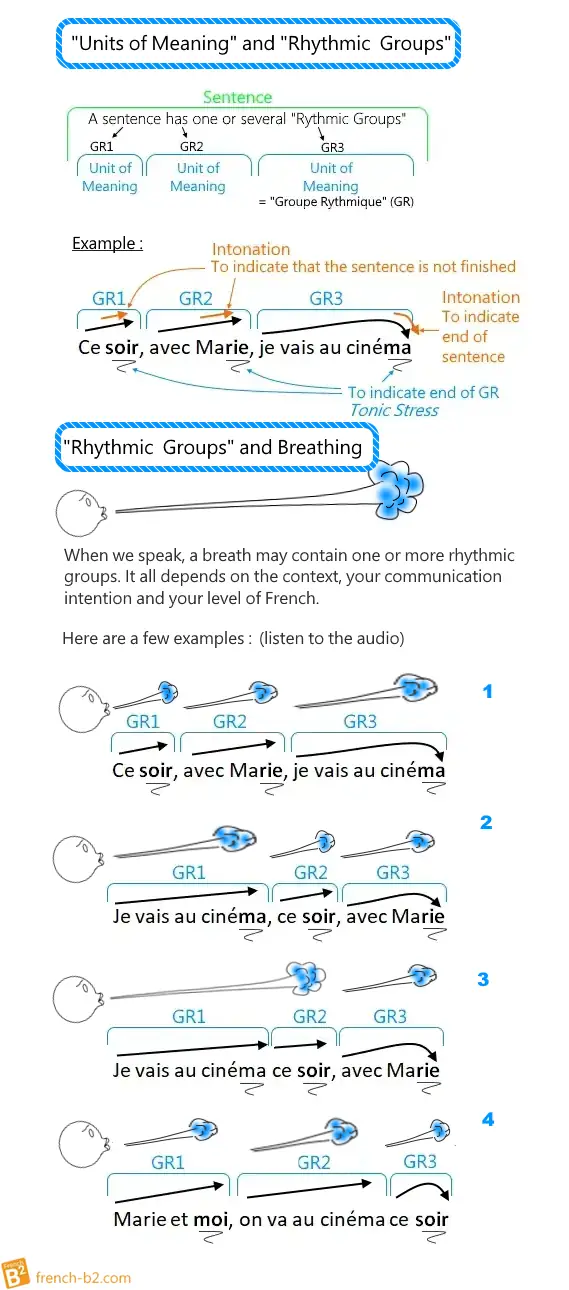
These 4 sentences are simple school cases to explain the concept and there are comma between “Rhythmic Groups”.
- If you are a beginner, start like in #1, #2, and #4, and slice your sentence. It is the first step in managing intonation and stress.
- When ready do like in #3 and put several Rhythmic Groups (Units of meaning) in the same breath, still in control of intonation and stress.
Listen to the audio :
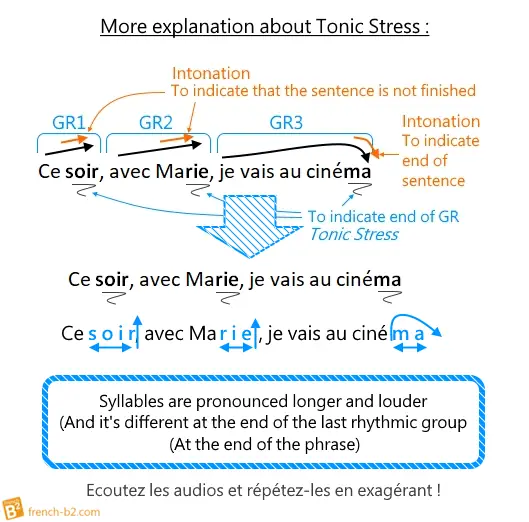
Listen again and imitate the audio!
A quick test :
Are you able to pronounce the right way ” Je vais au cinéma (GR1), ce soir (GR2), avec Marie (GR3)” when changing the order of Rhythmic Groups ?
- GR1, GR2, GR3
- GR1, GR3, GR2
- GR3, GR2, GR1
Write the sentence, draw Intonation, and underline Tonic Stress. If any difficulty, reread rules and apply.
3/ Expressive and Emphasis Stress, Imperative

Goals of Rhythmic Groups as Units of Meaning are :
![]() To help your interlocutor to decode
To help your interlocutor to decode
![]() To give the desired meaning to your message
To give the desired meaning to your message
Expressive and Emphasis Stress
Intonation and Tonic Stress help your interlocutor to get Units of Meaning (Rhythmic Groups).
Next step is to enrich a Units of Meaning, to give a feeling, or emotions, to enrich your message with Expressive Stress / Emphasis Stress :
_ Emphasis Stress is used to insist, to increase meaning of a word …
_ Expressive Stress is used to express feelings or emotions
Emphasis and Expressive stress are combined with a longer pronunciation of syllables (How long depends of your intention)
Emphasis Stress (to insist, increase the meaning of a word) 3 examples :
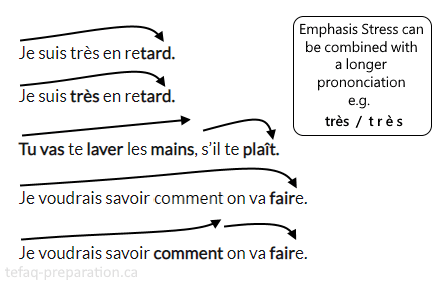
Expressive Stress (to express feelings or emotions) : 3 examples :
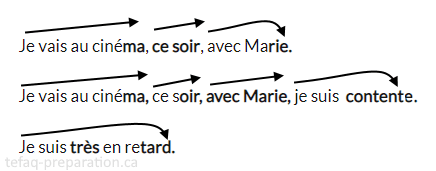
A quick test :
Do you know how to transmit a feeling ?
(Write sentences below, draw intonation, underline Stress (Tonic, Expressive, Emphasis).
- You are afraid (neutral) : “J’ai peur”
- You are afraid (with a feeling) : “J’ai peur ” +, ” J’ai très peur “++
- How to transmit the same level of feeling (++) with the 2 sentences ? How to do it ?
Which kinds of stress did you use ? Why ?
Another exercise :
- Neutral : Je vais au cinéma, demain soir, avec Marie
- With some emotion : Je vais au cinéma, demain soir, avec Marie
A quick exercise :
Repeat previous sentences and exaggerate pronunciation
4/ Questions

Goals of Questions are :
![]() To help your interlocutor to decode
To help your interlocutor to decode
![]() To give the desired meaning to your message
To give the desired meaning to your message
They are several ways to ask a question :
- Intonation : Intonation going up (Tu vas …)
- Syntaxe : Inversion (Vas-tu …, Est-ce que ….)
- Questions words and expressions : Où, Quand, Comment, Pourquoi, À quelle heure, …
And you can mix the methods. The only rule is to have an easy to understand message.
Context is also very important. For example :
- In a very noisy environment, I like to use “Est-ce que”.
- In formal situation : I would use “Inversion”
- In casual situation : I often use intonation going up
Find below examples of intonation for questions :
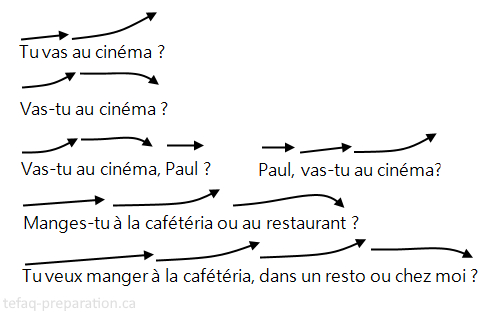
Did you get it ?
Do you like with #1 “Tu vas au cinéma ? “
Would you change it ? If Yes , How ?
How many ways to say it ?
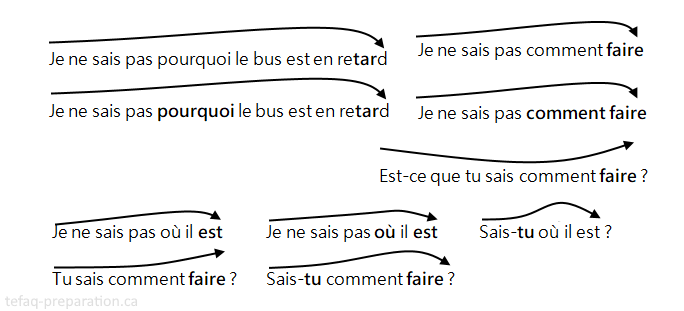
5/ How many Rhythmic Groups and How many Breaths ?

Goals of “many” rhythmic groups are :
![]() To help your interlocutor to decode
To help your interlocutor to decode
![]() To give the desired meaning to your message
To give the desired meaning to your message
![]() But you slice your sentence, depending on your level. Breath to survive and to be in control at your level
But you slice your sentence, depending on your level. Breath to survive and to be in control at your level
- Your intention of communication
- Speech speed
- The context of the conversation
- Your breath capacity
- Your level
The point is always to be coherent with the context of the conversation and your level. Your goal is to send clear messages to your interlocutors
Listen to some examples :
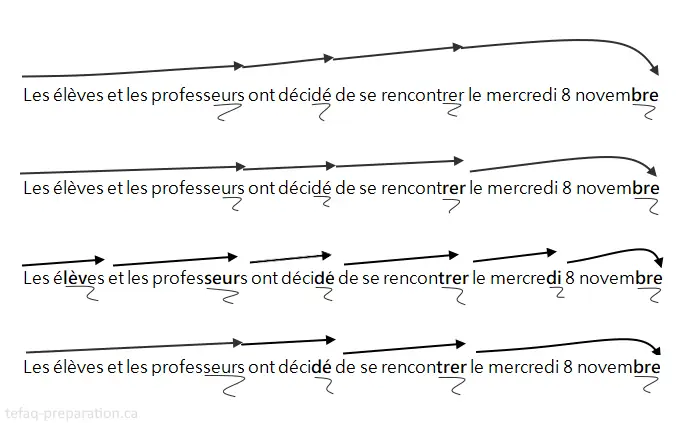 Rhythmic groups are always present, but there may be very small intonation gaps between them and little tonic stress (E.g.: Sentence #1)
Rhythmic groups are always present, but there may be very small intonation gaps between them and little tonic stress (E.g.: Sentence #1)6/ It is Your Message and how you want to say it !

To sum-up, to pronounce correctly a sentence :
![]() Know how to Help your interlocutor to catch “Units of Meaning”.
Know how to Help your interlocutor to catch “Units of Meaning”.
![]() Focus on “How you want to put it” , “How you want to say it” because it is your message.
Focus on “How you want to put it” , “How you want to say it” because it is your message.
![]() Breathing souflles can integrate one or more rhythmic groups and are part of the communication game.
Breathing souflles can integrate one or more rhythmic groups and are part of the communication game.
Mini-tips
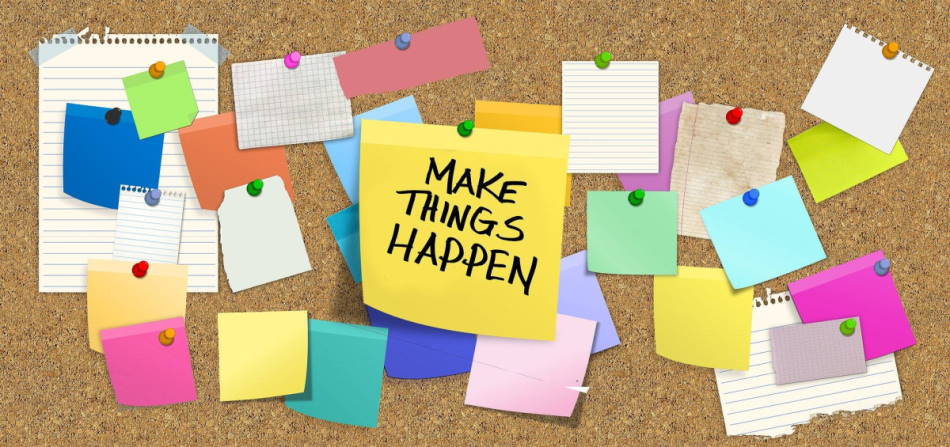

Start it K.I.S.S. to be in control
Keep it short and simple (K.I.S.S.), use short sentences
First, focus on rhythm groups.
Speak out loud, work on stress and intonation.

Use audios, videos, movies, ..., repeat, mimic and copy what you like
Use audios and videos such as : Audios in books for French-learning, TV, Podcasts, Videos, Songs, Karaoke, Movies, TV series, …. anything you like (with transcription)
Repeat, mimic and copy what you like in dialogues and texts
Speak out loud and work on Stress and intonation.

Imagine that you are a theater actor!
Imagine that you are a theater actor.
Do like in the theater and exaggerate your pronunciation, your stress and your intonation. There is no risk for you and it is liberating. It can also be a play with a friend, playing a part in a dialogue, and alternating roles.
Then in real life after a few trials you will gradually find your style and be comfortable

Think of the gestures that accompany a speech, observe and decide
Think of the gestures that accompany a speech, observe and decide
In languages with a tonic accent (like French), the movement of the body is part of the language.
Watch for example this video without trying to understand the lyrics, observe the intonation and then look at it again without the sound.
“Do you still see” the intonations ?
Gestures can help give strength to your message, to give it a rhythm and to have better communication.
Think about it and go step by step, and find your style.
If you don’t know where to start, try explaining the activities you did yesterday using : “Premièrement, …”, “Deuxièmement, …”, “Troisièmement, …”, … counting on your fingers.
Can you do it naturally without intonation?
This could be a good start if you are a beginner.
A word of advice:
Feel it, watch people, find your style and copy what you like, what you can do at your level and go step by step to connect intonation and gestures. It really works!

![]()
![]()
![]() Get the feeling !
Get the feeling !
It needs some practice but after everything is different, it is a real connection with the language. This is possible even if you are a beginner or at advanced level.
Get the feeling at your level !
